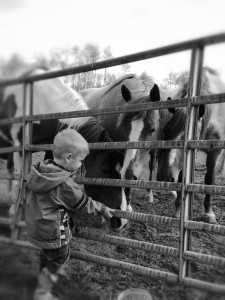Questions about animal and food production - answered!
Jean L Clavelle
Farm Food Care Saskatchewan
I was really excited to take part in Farm and Food Care Ontario’s twitter party a few weeks ago to promote the launch of their latest venture – ”Real Dirt on Farming”. This is a booklet designed to answer all of your questions about farming and food production in Canada. It is the real dirt so to speak on everything from livestock to crops to horticulture. It was great to see so many questions from all of you and how interested you were in how your food is grown. The sad part was that it ended way too soon, and there was so much more to share! On that note I would like to answer some questions about food production to make your decisions about food purchases easier.
Eggs with darker coloured yolks are healthier. There are actually no nutritional differences between eggs with different coloured yolks. The colour of the yolk is dependent on what a hen eats. Any diet for hens that includes a compound called xanthophylls will result in a darker yolk. A hen that eats a wheat-based diet (more common in western Canada and low in xanthophylls) will produce an egg that has a pale yellow yolk. Hens that eat a corn-based diet (most common in Ontario and higher in xanthophylls) will produce eggs with darker yellow yolks. This is also why free range eggs tend to be darker in the summer because hens will eat grasses or alfalfa which have higher xanthophyll levels.
Eggs with brown shells are better because they are more expensive! Ummm, no. There are no nutritional differences between eggs with white shells and eggs with brown shells. Eggs with brown shells come from different breeds of chickens. But then why do brown eggs cost more? Well that’s because the breed that produces brown eggs is a larger bird and requires more feed to lay one egg. Brown eggs are more expensive simply because it costs more to grow them.
Conventional milk produced in Canada is raised with hormones. Not so! Bovine somatotropin (bST) is a hormone that occurs naturally in cattle. It regulates growth and lactation in cattle and has no effect on humans. Recombinant bST otherwise known as rBST is a commercially produced version of the natural hormone and it can increase milk production by 10 to 15%. The problem however is that it may also increase the risk of mastitis and infertility and cause lameness in cows which is why Health Canada has not approved it for use in dairy production here. So what that means for you is that no milk, cheese or yogurt (conventional or organic) comes from cows given rBST.
Posted by Farm and Food Care on November 24th, 2014 :: Filed under Agriculture Education,Beef cattle,Chickens,Dairy cattle,Education and public awareness,eggs,Misconceptions,Poultry,Turkeys
Tags :: cattle, education, eggs, food, misconceptions





